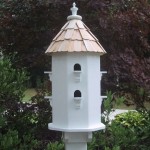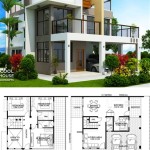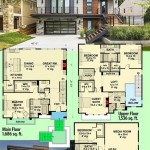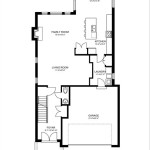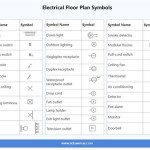```html
Low Construction Cost House Plans: Maximizing Value and Minimizing Expenses
Constructing a home is a significant financial undertaking for most individuals and families. The desire for homeownership is often tempered by the reality of escalating construction costs. However, the dream of owning a home remains attainable through strategic planning and the adoption of low construction cost house plans. These plans prioritize efficiency, simplicity, and the utilization of cost-effective materials to minimize overall expenses without compromising structural integrity or livability.
Low construction cost house plans are not synonymous with inferior quality or aesthetically unappealing designs. Instead, they represent a pragmatic approach to building that focuses on smart material choices, streamlined layouts, and efficient construction techniques. These plans often emphasize smaller footprints, simpler rooflines, and the elimination of unnecessary embellishments that contribute significantly to the overall budget. The key to success lies in careful planning and the selection of a design that aligns with both the homeowner's needs and budget constraints.
Simplifying the Design: Key to Cost Reduction
One of the most impactful strategies for reducing construction costs is to simplify the architectural design. Complex designs with intricate rooflines, numerous dormers, and irregular shapes require more labor, more materials, and often lead to increased waste. Conversely, a simple rectangular or square floor plan with a straightforward gable or hip roof is significantly more cost-effective to construct.
Opting for a single-story home or a two-story home with a compact footprint can also contribute to significant cost savings. Multi-story homes typically require less land than sprawling single-story designs, and a compact footprint minimizes the length of exterior walls, which directly translates to savings on foundation, framing, siding, and insulation costs.
Open floor plans, characterized by fewer interior walls, can further reduce construction costs by minimizing the amount of framing, drywall, and trim required. Open spaces also allow for greater natural light penetration, potentially reducing the need for artificial lighting and lowering energy consumption.
The elimination of unnecessary architectural features, such as elaborate moldings, decorative columns, and oversized windows, can also result in substantial cost savings. While these features may enhance the aesthetic appeal of a home, they often come with a significant price tag. Choosing simpler, more cost-effective alternatives can help keep the project within budget.
Material Selection: Prioritizing Affordability and Durability
The choice of building materials has a direct impact on the overall cost of construction. Opting for affordable and readily available materials is crucial for minimizing expenses. However, it is equally important to ensure that these materials are durable and suitable for the local climate.
For example, using engineered wood products, such as oriented strand board (OSB) or plywood, for sheathing and subflooring can be a more cost-effective alternative to solid lumber. These materials are often more readily available and less prone to warping and twisting, which can reduce waste and labor costs.
Vinyl siding is a popular choice for low-cost homes due to its affordability, durability, and low maintenance requirements. It is available in a wide variety of colors and styles, allowing homeowners to achieve the desired aesthetic without breaking the bank. Brick and stone veneer are more expensive alternatives, but can be used strategically to add visual interest and increase curb appeal without incurring the full cost of solid brick or stone.
In terms of roofing materials, asphalt shingles are generally the most affordable option. They are relatively easy to install and offer good protection against the elements. Metal roofing is a more durable and energy-efficient alternative, but it typically comes with a higher upfront cost. However, the long lifespan and energy savings of metal roofing may offset the initial investment over time.
Interior finishes also play a significant role in the overall cost of construction. Opting for laminate flooring instead of hardwood, using stock cabinetry instead of custom-built cabinets, and choosing standard plumbing fixtures instead of high-end designer options can all contribute to significant cost savings.
Efficient Construction Techniques: Minimizing Labor Costs and Waste
The efficiency of the construction process directly impacts labor costs and material waste, both of which can significantly affect the overall budget. Utilizing efficient construction techniques can help minimize these expenses and ensure that the project stays on track.
Prefabricated components, such as wall panels and roof trusses, can be assembled off-site and then transported to the construction site for installation. This can significantly reduce labor costs and construction time, as well as minimize waste by ensuring precise cuts and measurements.
Simple framing techniques, such as using standard stud spacing and minimizing the number of load-bearing walls, can also help reduce labor costs and material waste. Working closely with a qualified contractor to optimize the framing plan is essential for ensuring structural integrity while minimizing unnecessary expenses.
Proper planning and organization are crucial for minimizing waste and ensuring that materials are used efficiently. Ordering materials in bulk can often result in lower prices, but it is important to carefully calculate the quantities needed to avoid overstocking and potential waste. Implementing a waste management plan that includes recycling and reuse can also help reduce disposal costs and minimize the environmental impact of the project.
Selecting a contractor with experience in building low-cost homes is essential for ensuring that the project is completed efficiently and within budget. A knowledgeable contractor can provide valuable insights into cost-effective materials and construction techniques, as well as help navigate the permitting process and ensure compliance with local building codes.
In addition to these core strategies, several other factors can influence the overall cost of construction. The location of the property, the availability of utilities, and the complexity of the site preparation work can all impact the budget. Conducting thorough research and obtaining multiple bids from qualified contractors is essential for making informed decisions and ensuring that the project stays within budget.
Low construction cost house plans offer a viable pathway to homeownership for individuals and families seeking to build a home without incurring excessive debt. By prioritizing simplicity, affordability, and efficiency, these plans enable homeowners to realize their dream of owning a home without compromising quality or livability. Careful planning, thoughtful material selection, and the implementation of efficient construction techniques are essential for maximizing value and minimizing expenses throughout the building process.
```
Low Cost House Designs Small Budget Plans Houseplans Com

Est House Plans To Build Simple With Style Blog Eplans Com

Low Budget Simple House Design Plans For Builders Blog Builderhouseplans Com

Low Budget Simple House Design Plans For Builders Blog Builderhouseplans Com

Low Budget Simple House Design Plans For Builders Blog Builderhouseplans Com

Practical Relaxing Small Space 3 Bedroom 9 5 X 10 Meters 31 33ft Low Cost House Design

Low Budget Simple House Design Plans For Builders Blog Builderhouseplans Com

Stylish Low Budget Modern 3 Bedroom House Design Plans Blog Floorplans Com

Stylish And Simple Inexpensive House Plans To Build Houseplans Blog Com

Low Budget Simple House Design Plans For Builders Blog Builderhouseplans Com



